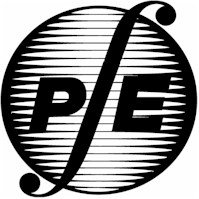Idaho Society of Professional Engineers
Friday Update - 06/17/05
UPCOMING EVENTS:
● July 7 - 9, 2005 - NSPE
2005 Annual Convention, Chicago, Illinois
● August 11-13, 2005 - ACEC
of Idaho Annual Meeting - Sun Valley, Idaho
● October 28, 2005 - PE and
PLS Examinations - Boise, Idaho
● October 29, 2005 FE (aka
EIT) Examinations - Boise, Idaho, Pocatello, Idaho, Moscow, Idaho

The
salary survey has a new graphical interface, and database upgrades are
complete! Take advantage of your NSPE member discount now and see the
enhancements to the data and search engine!


MATHCOUNTS PROBLEM OF THE WEEK
Can you solve this MATHCOUNTS problem? The answer will appear in next week's
edition of the Friday Update!
National Hockey League's R&D Camp
At the National Hockey League’s Research & Development camp last week, NHL
officials and participants joined together to figure out how to bring more
offense and excitement to hockey games. The primary concerns are the lack flow
to the games due to all of the fouls/tricky rules and the lack of scoring. To
address the need for more scoring a number of situations were tested out. The
opening of a regulation hockey goal is currently 4 feet high and 6 feet wide. If
the goal is made 4 inches higher and 8 inches wider, by what percent is the
opening of the goal increased? Express your answer to the nearest tenth.
--------------------------------------------------------------------------------
In addition to increasing the size of the goal face, it is being discussed that
the pads used by the goalies could be decreased in size. Pads are not only used
for the goalie’s personal protection, but also to block the opening of the goal.
The length of a goalie’s rectangular leg pad is 38 inches. Under the proposed
change, the width of the pad would shrink from 12 inches to 11 inches. What
fraction of the current surface area of the leg pad is the area of the proposed
new pad?
--------------------------------------------------------------------------------
Notice that by making the goal bigger and the two leg pads that are used to
block the goal smaller, goalies are put at a double disadvantage! There is a
bigger goal opening and not as much leg pad to block/fill that opening. What if
the regulation goal (4 feet by 6 feet) is made 3 inches taller and 3 inches
wider, but we want to increase the width of the two leg pads to take away the
extra area that was just added by increasing the goal size. By how many inches
should the width of each of the 38-inch-tall leg pads be increased? Express your
answer as a decimal to the nearest tenth.
Answer to last week's MATHCOUNTS problem:
The Mathletes were shown a picture of the original angle ACB, but we were told
that ray CB is pointing east and ray CA is pointing to the northeast. This means
ray CA will rotate 40 degrees clockwise to be positioned right on top of ray CB,
then another 360 degrees places it again right on top of ray CB. We’ve already
rotated 40 + 360 = 400 degrees. We have another 80 degrees to go, which means
the new acute angle ACB is 80 degrees.
--------------------------------------------------------------------------------
This one can be done a couple of ways. We’re told ¼ of x is equal to the same
number that 35% of y is equal to, so therefore (¼)x = (35%)y, or (.25)x =
(.35)y. Multiplying both sides of the equation by 100 gets us to 25x = 35y.
Since we want to know the value of x/y, let’s divide both sides by y: (25x)/y =
35. Now we need to get the 25 off the left side, so we’ll divide both sides by
25 and we have x/y = 35/25, which reduces to 7/5. We also could have chosen any
number, let’s say 35, and if 35 is 35% of y, then y is 100; and if 35 is ¼ of x,
then x is 4(35) = 140. So what is the ratio of x to y? It’s 140/100 or 14/10 or
7/5.
--------------------------------------------------------------------------------
We have been given a set of integers, and we know that the mean and the median
are playing a role in this problem. In order to determine the median, we are
going to need to get the integers into numerical order, which is {5, 7, 8, 12}…
and until we know the value of x, we don’t know where it would fit into the
list. Notice, though, that whatever integer value x has, the median can only
possibly be 7 or 8. If the median is 7, then the mean is 7, so the sum of the
values is 5(7) = 35. Since 5 + 7 + 8 + 12 = 32, x would have to be 3. (And if x
= 3, then the median is still 7, so this works.) Our other alternative is for
the median to be 8, so the mean is 8, so the integers add to 5(8) = 40, and x =
8. (And if x = 8, then the median is still 8, so this works.) The sum of the
distinct possible values of x is 3 + 8 = 11.
If you want to see last week's problem again, click
http://www.mathcounts.org/webarticles/anmviewer.asp?a=676&z=104
Idaho Society of Professional Engineers
PO Box 170239
Boise, ID 83717-0239
208-426-0636
Fax: 208-426-0639
E-Mail: ispe@rmci.net
Web Site: www.Idahospe.org
 Idaho
Society of Professional Engineers
Idaho
Society of Professional Engineers